Intake Manifold Replacement Upper
Removal Procedure
- Relieve the fuel system pressure. Refer to Fuel Pressure Relief Procedure
.
- Disconnect the negative battery cable. Refer to
Caution: Unless directed otherwise, the ignition and start switch must be in the OFF or LOCK position, and all electrical loads must be OFF before servicing
any electrical component. Disconnect the negative battery cable to prevent an electrical spark should a tool or equipment come in contact with an exposed electrical terminal. Failure to follow these precautions may result in personal injury and/or damage to
the vehicle or its components.
.
- Remove the air cleaner inlet duct.
- Disconnect the vacuum lines as necessary.
- Remove the accelerator cable splash shield.
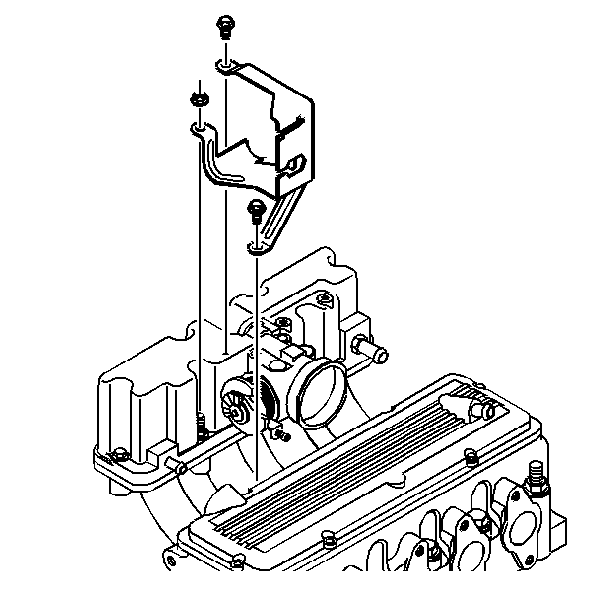
- Remove the accelerator bracket.
- Remove the following cables:
| • | The transmission control |
- Remove the vacuum hose harness from the top of the air inlet.
- Remove the PCV and the brake vacuum hoses at the upper intake
manifold.
- Disconnect the following connectors:
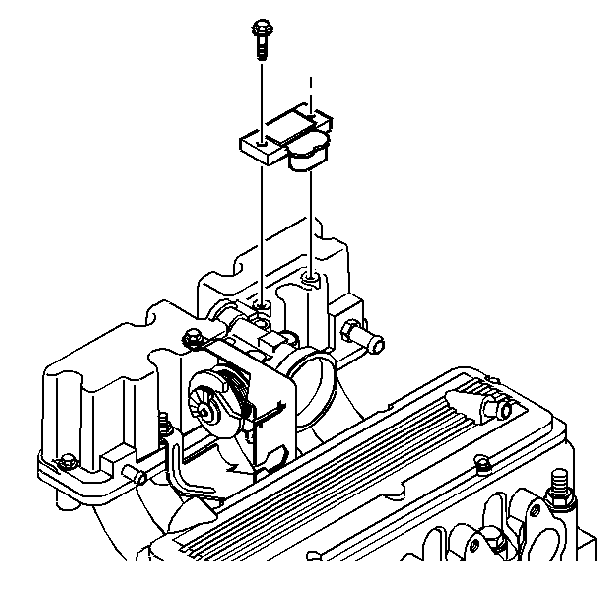
- Remove the MAP sensor.
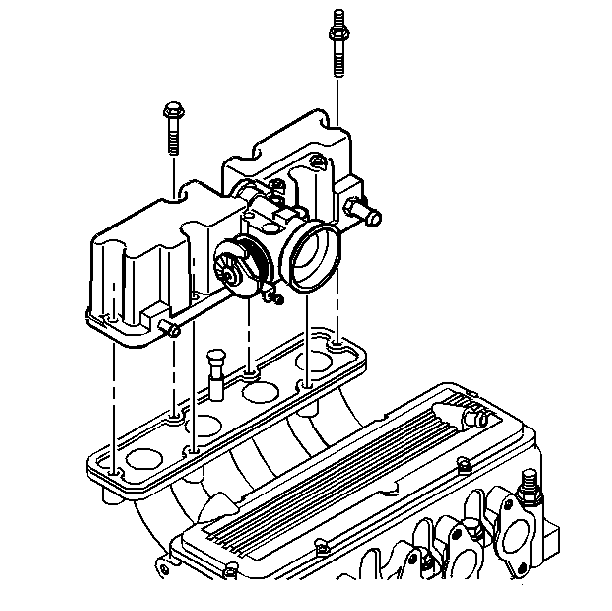
- Remove the upper intake manifold assembly bolts.
- Remove the upper intake manifold assembly.
- Inspect the manifold for cracks and gasket surface damage.
Installation Procedure

- Install the upper intake manifold assembly.
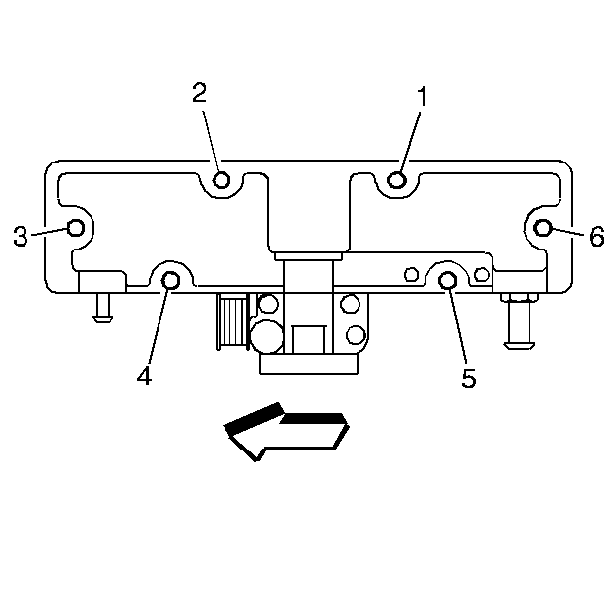
- Install the upper intake manifold assembly bolts.
Tighten
Tighten the bolts to 30 N·m (22 lb ft).
Notice: Use the correct fastener in the correct location. Replacement fasteners
must be the correct part number for that application. Fasteners requiring
replacement or fasteners requiring the use of thread locking compound or sealant
are identified in the service procedure. Do not use paints, lubricants, or
corrosion inhibitors on fasteners or fastener joint surfaces unless specified.
These coatings affect fastener torque and joint clamping force and may damage
the fastener. Use the correct tightening sequence and specifications when
installing fasteners in order to avoid damage to parts and systems.

- Install the MAP sensor.
Tighten
Tighten the sensor bolts to 3 N·m (27 lb in).

- Install the two bolts and the nut attaching the accelerator cable bracket.
- Install the following electrical connections:
| • | The Throttle Position sensor |
- Connect the PCV and brake vacuum hoses to the upper intake manifold.
- Install the vacuum hose harness to the top of the air inlet.
- Connect the following cables:
| • | The transmission control |
- Install the accelerator cable splash shield.
- Install the accelerator cable splash shield bolts.
Tighten
Tighten the bolts to 25 N·m (18 lb in).
- Install the air cleaner inlet duct.
- Connect the negative battery cable.
Intake Manifold Replacement Lower
Removal Procedure
- Relieve the fuel system pressure. Refer to Fuel Pressure Relief Procedure
.
- Disconnect the negative battery cable. Refer to
Caution: Unless directed otherwise, the ignition and start switch must be in the OFF or LOCK position, and all electrical loads must be OFF before servicing
any electrical component. Disconnect the negative battery cable to prevent an electrical spark should a tool or equipment come in contact with an exposed electrical terminal. Failure to follow these precautions may result in personal injury and/or damage to
the vehicle or its components.
.
- Remove the air cleaner inlet duct.
- Remove the accelerator cable splash shield.
- Remove the following cables:
- Remove the vacuum hose harness from top of air inlet.
- Disconnect the PCV and brake vacuum hoses at the upper intake
manifold.
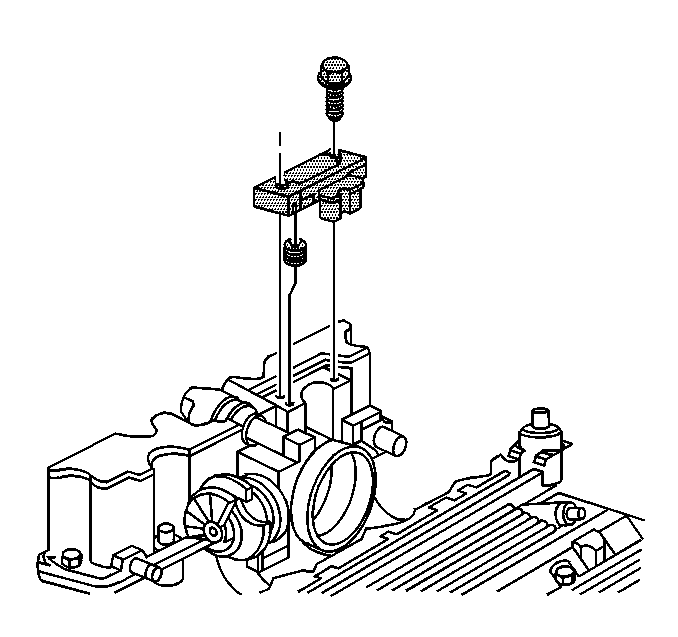
- Remove the following electrical connectors:

- Remove the two bolts and one nut attaching the accelerator bracket.

- Remove the MAP sensor.
- Remove the upper intake manifold. Refer to
Intake Manifold Replacement
.
- Remove the fuel feed.
- Return the quick-connect fittings.
- Remove the one bolt holding the intake brace to the power steering
pump brace.
- Remove the fuel inlet pipe retainers.
- Remove the fill tube attaching nut.
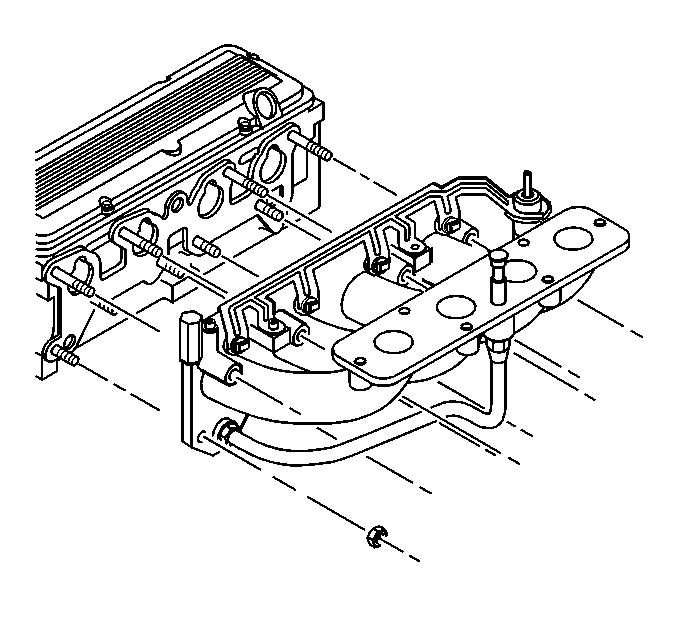
- Remove the lower intake manifold attaching nuts.
- Remove the upper studs on the lower intake manifold.
- Remove the lower intake manifold from the engine.
- Clean the mating surfaces on the intake manifold and the cylinder
head.
- Clean excessive carbon deposits from the EGR passage.
- Inspect the manifold for cracks, broken flanges, and gasket surface
damage.
Installation Procedure

- Install a new lower intake manifold gasket.
- Install the lower intake manifold assembly.
- Install the lower intake manifold to cylinder head studs.
Tighten
Tighten the studs to 10 N·m (89 lb in).
Notice: Use the correct fastener in the correct location. Replacement fasteners
must be the correct part number for that application. Fasteners requiring
replacement or fasteners requiring the use of thread locking compound or sealant
are identified in the service procedure. Do not use paints, lubricants, or
corrosion inhibitors on fasteners or fastener joint surfaces unless specified.
These coatings affect fastener torque and joint clamping force and may damage
the fastener. Use the correct tightening sequence and specifications when
installing fasteners in order to avoid damage to parts and systems.
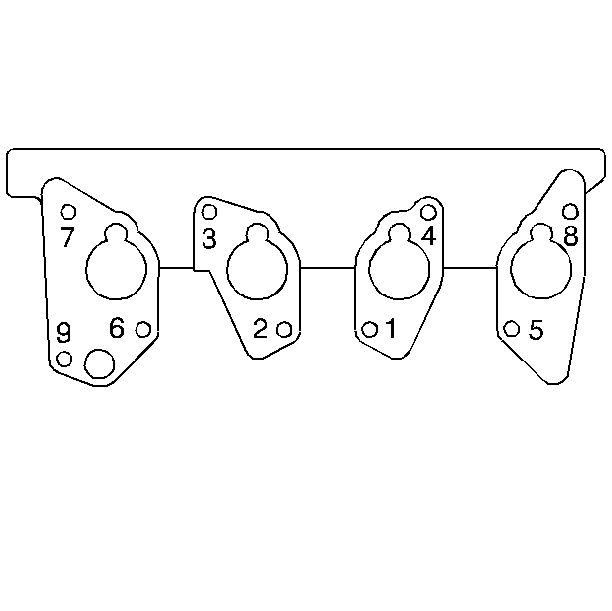
- Install the lower intake manifold to cylinder head nuts.
Tighten
Tighten the nuts to 33 N·m (24 lb ft).
- Install the transmission fill tube attaching nut.
- Install the fuel inlet pipe retainers.
Tighten
Tighten the bolts to 25 N·m (18 lb in).
- Install the bolt holding the intake brace to the power steering
pump brace.
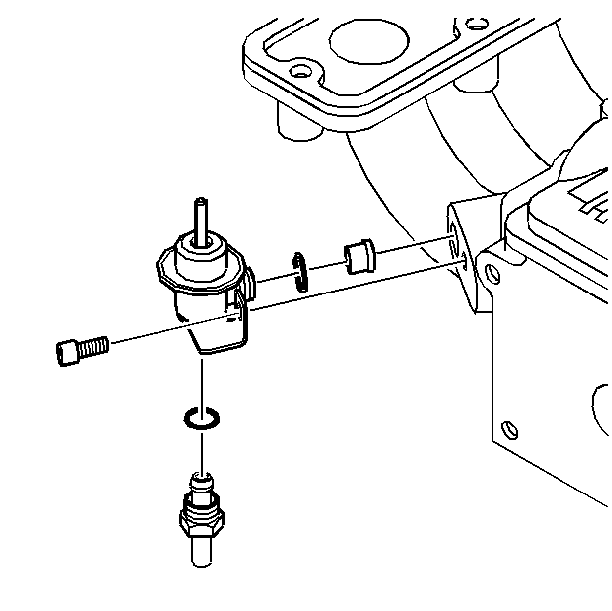
- Connect the fuel feed and return quick-connect fittings.
- Install the upper intake manifold. Refer to
Intake Manifold Replacement
.

- Install the MAP sensor.
- Install the MAP sensor bolt.
Tighten
Tighten the bolt to 3 N·m (27 lb in).

- Install the two bolts and one nut attaching the accelerator cable bracket.

- Connect the following electrical connectors:
- Connect the PCV and brake vacuum hoses at the upper intake manifold.
- Install the vacuum hose harness from the top of the air inlet.
- Connect the following cables:
| • | The transmission control |
- Install the accelerator cable splash shield.
- Install the accelerator cable splash shield screws.
Tighten
Tighten the screws to 25 N·m (18 lb in).
- Install the air inlet duct assembly.
- Install the fuel pump fuse. Check the fuel pump fuse for leaks.
- Connect the negative battery cable.

















